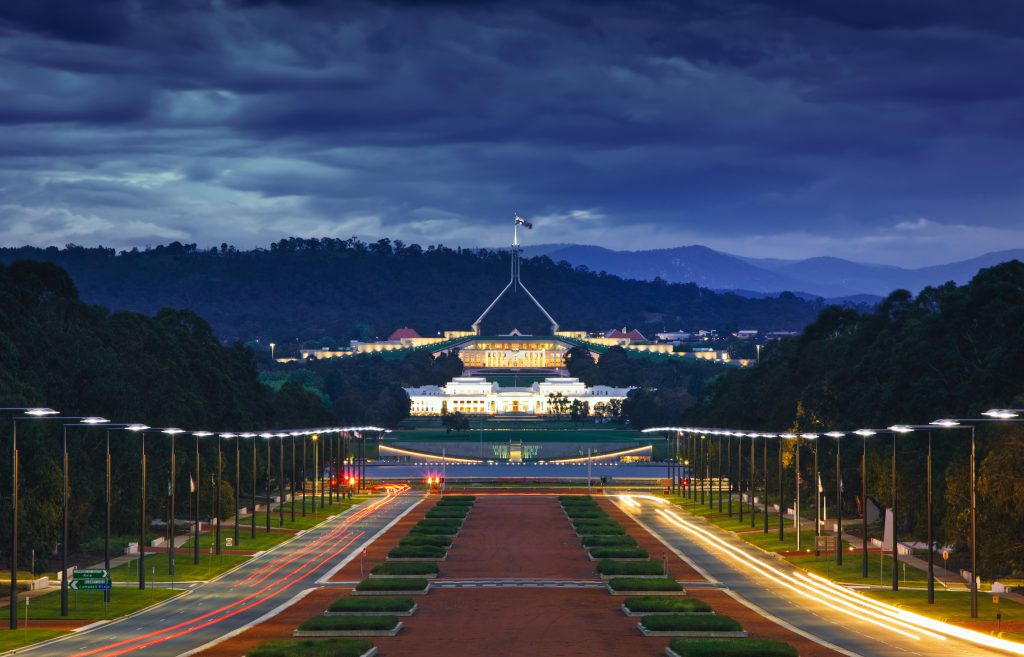November 15, 2022
Private actors seeking “public interest standing” to advance public interest claims against governments
This blog is an excerpt from “The Climate Change Conundrum – Private Litigation as a Mechanism to Advance Public Interests?” – the Ivan C. Rand Memorial Lecture, given by Dr. Janis Sarra on 27 October 2022 at the University of New Brunswick. Click here to read the full speech (PDF).
Turning to the second avenue, private actors seeking public interest standing to advance climate-related public interest claims against governments, I have a Canadian, Colombian, and Australian example.
Generally, constitutional issues can be raised in court through many avenues, including by reference questions submitted by governments, such as Canada’s carbon pricing legislation, through private litigation on the scope or exercise of legislative authority, etc. Issues can also be raised by public interest standing. In Canada, the tests for public-interest standing are:
(1) whether the case raises a serious justiciable issue,
(2) whether the party bringing the action has a real stake or a genuine interest in its outcome, and
(3) whether, having regard to a number of factors, the proposed suit is a reasonable and effective means to bring the case to court.
Mathur et al and Government of Ontario
My Canadian example is the current case of Mathur et al and Government of Ontario – the applicants are seven youths between the ages of 12 and 24 who reside in Ontario.

The applicants seek declaratory and mandatory orders relating to the Ontario government’s (Ontario) target and plan for the reduction of GHG emissions in the province by the year 2030, submitting that it is insufficiently ambitious, and that Ontario’s failure to set a more stringent target and exacting plan for combating climate change over the coming decade infringes the constitutional rights of youth and future generations. The Attorney General of Ontario sought to strike out their application on the ground that it has no reasonable prospect of success.
Justice Carole Brown of the Ontario Superior Court applied the three-part test for granting public standing, as noted above. The Court held that factors to consider in granting or refusing public interest standing include the plaintiff’s capacity to bring forward a claim; whether the case is of public interest: does it transcend the interests of those most directly affected by the challenged law or action; does it provide access to justice for disadvantaged persons in society whose legal rights are affected; whether there are realistic alternative means that would favour a more efficient and effective use of judicial resources such as other potential plaintiffs or parallel proceedings; and the potential impact of the proceedings on the rights of others who are equally or more directly affected.
The Court held that the applicants met the test for standing on behalf of future generations. The case raises a serious justiciable issue and a substantial constitutional issue; the applicants have demonstrated that they have a real stake and genuine interest in the outcome, given their age and activism; and the proposed suit is a reasonable and effective means to bring this application to court. Among factors cited were that Ecojustice, a Canadian environmental law charity, is counsel for the applicants, which reflects the plaintiff’s resources and expertise in presenting these issues in a sufficiently concrete and well-developed factual context; this case is of public interest, in that it transcends the interests of all Ontario residents, not just the applicants’ generation or the ones that follow; given their age, the applicants do bring a useful and distinctive perspective to the resolution of the issues on this application; and granting the applicants standing on behalf of future generations does not create a conflict between private and public interests or affect the rights of others who are equally or more directly affected by climate change.
The Court held that at its core, the case is about whether the government violated the applicants’ sections 7 and 15 Charter rights by repealing the Climate Change Act through the Cap and Trade Cancellation Act and by setting a target for the reduction of GHG emissions that is insufficiently ambitious. The Court held that both the preparation of the Target and Plan and the repeal of the Climate Change Act by Ontario are governmental actions that are reviewable by the court for compliance with the Charter. They are legislatively mandated by the Ontario legislature and sub-delegated to the Ministry of the Environment and to be approved by the Lieutenant Governor in Council, it is a Cabinet decision, and have the force of law, and are therefore reviewable.
The Court in Mathur noted that in the Carbon Pricing Reference, the Court of Appeal for Ontario observed that various findings and standards can be projected or predicted with scientific accuracy, including that the global average surface temperature has increased by approximately 1 degree Celsius) above pre-industrial levels and it is estimated that by 2040, the global average surface temperature will have increased by 1.5 degrees Celsius; that temperatures in Canada will continue to increase at a rate greater than the rest of the world; and the United Nations Intergovernmental Panel on Climate Change (IPCC) recently reported that global net anthropogenic CO2 emissions must be reduced by approximately 45% below 2010 levels by 2030, and must reach net zero by 2050, to avoid the significantly more deleterious impacts of climate change.
On the question of justiciability, the Court held that the doctrine of justiciability is largely focused on an inquiry into the “appropriateness” of judicial adjudication, and the court will consider the capacities and legitimacy of the judicial process, the constitutional separation of powers, and the nature of the dispute before the court. The Court held that this application is prima facie justiciable, as the applicants are challenging very specific governmental actions and legislation. The Court held that the application engages each of the section 7 Charter rights of life, liberty, and security, the right not to be deprived of life, liberty and security of the person except in accordance with the principles of fundamental justice. The Court held that it was not able to find, at this juncture, that the application has no reasonable prospect of success.
The Court further held that the applicants have standing on behalf of their generation and of future generations of Ontarians, as they are all involved with various climate change initiatives and activism. The Court noted that the Ontario Court of Appeal has held that no injury needs to have been committed in order to determine standing as long as the claimants can show that a potential injury affected them. The Court held that future generations would not be able to bring the same claim against the current government for setting a Target that the applicants deem inadequate; the applicants therefore should be given standing for their generation, as well as for future generations.

Insights:
Standing:
o Mathur et al is the first Canadian case to overcome the ‘justiciable hurdle’ – a differentiator from the other youth cases may be that it focuses on specific legislative action of the government that is reviewable by the courts.
o Rights: The Ontario Divisional Court rejected the government’s attempt to overturn this judgment on issues of reasonable cause of action and justiciability. It is recognition that public interest in government action may be vindicated by private parties.
o Remedies: It is the first case to be heard on merits in Canada, merits’ hearings were in September 2022 and judgment pending. The availability of mandatory relief in the circumstances is at issue.
DeJusticia (Rodríguez Peña and others) v Colombia
The second example is from Colombia in DeJusticia (Rodríguez Peña and others) v Colombia. The Colombia Supreme Court approved a case brought by young people in respect of deforestation of the Amazon. Twenty-five youth aged 7 to 25 filed a tutela, a type of constitutional case against the government to protect individual rights, claiming that their right to a healthy environment and life in the future is being violated. The District Court had ruled against the tutela. On appeal, the Supreme Court of Colombia overruled the lower court, deciding that the conditions for filing a tutela were sufficiently met, because the connection between environmental deterioration, violation of fundamental rights, and direct harm to the individual was established, and the judicial order would be oriented towards restoring individual rights, not collective ones.

The Supreme Court ruled that the fundamental rights of life, health, minimum subsistence, freedom, and human dignity are substantially linked to, and are determined by, the environment and the ecosystem. Applying the principle of precaution, intergenerational equity, and solidarity, the Court found that, by failing to prevent deforestation, a threat to the future generations’ fundamental rights had been established. As to the rights of nature, the Supreme Court regarded the Colombian Amazon rainforest as the “lungs of the world” and held that the Colombian state’s failure to protect the Amazon rainforest affected the fundamental rights of all Colombian citizens, and in an historic ruling, the Supreme Court recognized Colombian Amazon as an entity that has rights entitled to protection, maintenance, and restoration by the state.
The Court issued mandatory orders: formulate short-, medium-, and long-term action plans to tackle deforestation and climate change impacts; create, with wide public participation, an Intergenerational Pact for the Life of the Colombian Amazon (PIVAC) to reduce deforestation and GHG emissions; all municipalities must update and implement Land Management Plans and include an action plan to reduce deforestation; and the corporate defendants must create an action plan to tackle deforestation.
Insights:
Standing:
o The District Court had found that a tutela was not an appropriate action because of the collective nature of the issue; however, the Supreme Court found that a tutela can be filed where there is a connection between the violation of collective and individual rights if the person filing the tutela is directly affected, the violation of rights at stake is clearly demonstrated, and the action sought is oriented towards restoring individual rights, and not collective ones.
Rights:
o The Supreme Court recognized for the first time that the Colombian Amazon is a “subject of rights” entitled to protection, conservation, maintenance, and restoration led by the state and the territorial agencies.
o The judgment paves the way for citizens to demand protection of the forest when the government fails to tackle deforestation.
Remedy:
o The multi-faceted remedy ordered affected both public authorities and private parties.
Pabai and Kabai v Commonwealth of Australia
The third example is a recent Australian case, Pabai and Kabai v Commonwealth of Australia. A class action was commenced in 2021 by two Indigenous leaders from the Torres Strait Islands against the Australian government. The representative applicants allege that the Commonwealth of Australia (Commonwealth) owes a duty of care to Torres Strait Islanders, arising from the Torres Strait Treaty and the Native Title Act 1993 (Cth) to take reasonable steps to protect them, their culture, and their environment from the harms caused by climate change. They claim that, in fulfilling its duty, the Commonwealth must have regard to the best available science in relation to climate change.
Torres Strait Islanders, whose homelands are the islands and reefs of the Torres Strait, are especially vulnerable to the impacts of climate change. They are already experiencing sea level rise, storm surges, coastal erosion, inundation and flooding of their villages, contamination of freshwater sources with saltwater, ocean acidification and degradation of the marine environment, and more frequent and severe heatwaves, with impacts on human health. The projected impacts of climate change are even more severe: loss of freshwater sources, increased undernutrition resulting from diminished food production, and increased health harms from food- and water-borne diseases and vector-borne diseases. The claim specifies that, if unchecked, the projected impacts of climate change in the Torres Strait would render islands uninhabitable.
The issue is whether the Commonwealth owes a duty of care to Torres Strait Islanders to take reasonable steps to protect them, their traditional way of life, and the marine environment in and around the Torres Strait Islands from climate change impacts.
The lawsuit alleges that the Commonwealth has breached its duty of care by failing to implement measures to reduce Australia’s GHG emissions; that in determining its GHG emission reduction targets, it has failed to take into account and engage with the best available science on emissions, failed to assess and address current and projected climate-related harms to Torres Strait Islanders, including reduction of GHG emissions so as to halt further climate change and minimize harms; and that adaptation measures, such as the Commonwealth’s construction of a sea wall on Sabai Island, have been inadequate.
Justice Mortimer of the Federal Court of Australia, in a July 2022 judgment, noted that the case is a representative class proceeding in which the applicants seek relief on their own behalf and on behalf of all persons of Torres Strait Islander descent, who they contend are suffering loss and damage as a result of the conduct of the Commonwealth; contending that the Commonwealth owes a duty of care to Torres Strait Islanders to take reasonable steps to protect them and their traditional way of life, including taking steps to preserve Ailan Kastom (a body of customs and traditions), and the marine environment in and around the protected zone, as defined by a treaty between Australia and Papua New Guinea regarding the Torres Strait Islands, from the current and projected impacts of climate change in the Torres Strait Islands.
The applicants seek an injunction requiring the Commonwealth to implement such measures as are necessary to protect the land and marine environment of the Torres Strait Islands and the cultural and customary rights of the Torres Strait Islanders from GHG emissions into the Earth’s atmosphere; reduce Australia’s GHG emissions consistent with the best available science target; and otherwise avoid injury and harm to Torres Strait Islanders from GHG emissions. They also seek damages for degradation of the land and marine environment, including life and coral reef systems, loss of Ailan Kastom, damage to their native title rights, and physical and psychological injury as a result of ongoing breaches of the Commonwealth’s alleged duty of care.

The trial has been set for June 2023, and the applicants were given leave in July 2022 to file, serve, and rely on an amended statement of claim. The Court held: “There is no denying the unremitting march of the sea onto the islands of the Torres Strait. The reality for the people of the Torres Strait is that they risk losing their way of life, their homes, their gardens, the resources of the sea on which they have always depended and the graves of their ancestors.”
The issue for trial is whether the Commonwealth has legal responsibility for that reality, the Court noting there is considerable urgency in determining this matter. It held that the applicants, and the Torres Strait Islanders they represent, are entitled to know whether the Commonwealth is legally responsible in the way alleged, or not. The Court held that appropriate way forward is to split the trial into tranches ─ first to take all the lay evidence from both parties, including taking evidence in the Torres Strait, and then expert evidence.
Insights:
Standing:
o Although no issue appears to have been raised, these individuals are clearly rights holders under the common law and treaties, as they are alleging damage from violation of those rights, and the court need only assess whether the individuals are the best representatives of the affected class.
Rights:
o In this case, the rights asserted are a combination of common law tort claims and a violation of contractual/public law duties arising from treaties/legislation due to government action/inaction. The Court is signalling to the parties the urgency of getting to trial, stating: “There is a strong public interest in this matter being decided with reasonable expedition. By June 2023 the proceeding will have been on foot for more than 18 months. In most people’s lives, that is a long time. For the people of the Torres Strait, it is a long time to be waiting, and watching the march of the sea on a daily basis. It is in the interests of all parties that the important questions raised by this proceeding be determined, one way or the other, as soon as reasonably practicable.
o The decision is also signalling the expectation of transparency and cooperation. The Court held: “No Court acting reasonably is going to refuse to order production of key documents with real probative value, and no litigant such as the Commonwealth acting reasonably is going to refuse to produce them, unless on a ground such as public interest immunity, which the Court can readily and expeditiously determine during the trial process.”
In these cases, the private parties assert damage to rights held by the public generally or a broad section of the public to seek standing to assert the public interest against the government or public authority and seek remedies accordingly. Here, the scope of the alleged damage is so widespread, but so diffuse that an affected individual seeking an individual remedy may have little effect on the activity or duty violation causing the harm. The only effective action would seem to be one that addresses the collective harm and seeks remedies that address it. These three cases offer some strategies for accomplishing this goal. A third strategy involves private parties gaining access to regulatory remedies that are expressly designed to further the public interest.
This blog is an excerpt from “The Climate Change Conundrum – Private Litigation as a Mechanism to Advance Public Interests?” – the Ivan C. Rand Memorial Lecture, given by Dr. Janis Sarra on 27 October 2022 at the University of New Brunswick. Click here to read the full speech (PDF).





